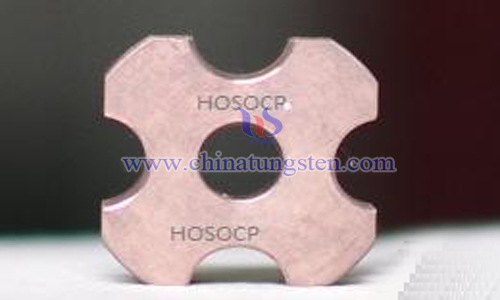A Preparation Method of Tungsten-copper Alloy as Electrical Contact Material
- Details
- Category: Tungsten Information
- Published on Friday, 12 July 2019 01:13
In the tungsten-copper alloy, the high melting point tungsten forms a refractory skeleton, which makes the material resistant to arcing, abrasion and high temperature, while the low melting point copper (Cu) has excellent electrical conductivity, thermal conductivity and good plasticity. Therefore, tungsten-copper alloy is widely used as an electrical contact material for high-voltage and ultra-high-voltage electrical switches.
The tungsten-copper alloy used as the electrical contact material uses copper powder and tungsten (W) powder as raw materials. However, due to the large difference in the physical properties of copper and tungsten, the uniformity of tungsten distribution in the alloy is difficult to ensure, and the strength of the tungsten skeleton is insufficient, resulting in insufficient material strength and arc erosion resistance.

In order to solve this problem, some scholars have proposed a method for preparing a tungsten-copper alloy electrical contact material, which is specifically implemented according to the following steps:
Step 1, according to the mass ratio of CuO powder to W powder 1:1, the CuO powder and the W powder are uniformly mixed;
Step 2, the mixed powder is subjected to reduction treatment at a temperature of 450 ° C under a hydrogen atmosphere for 1 hour, and then compacted and compacted into a powder; and further reduced at a temperature of 700 ° C under a hydrogen atmosphere for 1 hour to increase the pressure. Press molding, breaking into powder;
Step 3, the mixed powder compact processed in step 2, placing copper flakes on top of the compact, sintering at a temperature of 1100 ° C for 3 h;
In step 4, the sintered material is placed in a graphite container, and the tungsten wire preparation body is placed on the material, and the temperature is maintained at 1200 ° C for 4 hours under vacuum to obtain a copper-tungsten contact material.
The working principle of the above method is to replace the induced Cu powder with CuO powder, which not only solves the difficulty in preparing the ultrafine copper powder, but also plays a role in hindering the growth of the tungsten particles. Through repeated compaction and crushing after reduction, Cu is filled into the surrounding pores of the W particles like a small ball, and the W particles are effectively divided to avoid the occurrence of closed cells, thereby making the copper-tungsten contact material the arc burn resistance is significantly improved. At the same time, the tungsten wire braid is used as the skeleton, so that the molten copper liquid is easily penetrated therein, and the obtained tungsten-copper alloy has a high density close to the theoretical density, and the tungsten-copper alloy prepared by the conventional process is prevented from being mixed. Uniformity of the tissue caused by uniformity; and the use of a tungsten wire braid as a skeleton, so that the resulting material has good strength and wear resistance.
- Tungsten Manufacturer & Supplier, Chinatungsten Online: www.chinatungsten.com
- Tungsten News & Prices of China Tungsten Industry Association: www.ctia.com.cn
- Molybdenum News & Price: news.molybdenum.com.cn
- Tel.: 86 592 5129696; Fax: 86 592 5129797; Email: sales@chinatungsten.com



 sales@chinatungsten.com
sales@chinatungsten.com